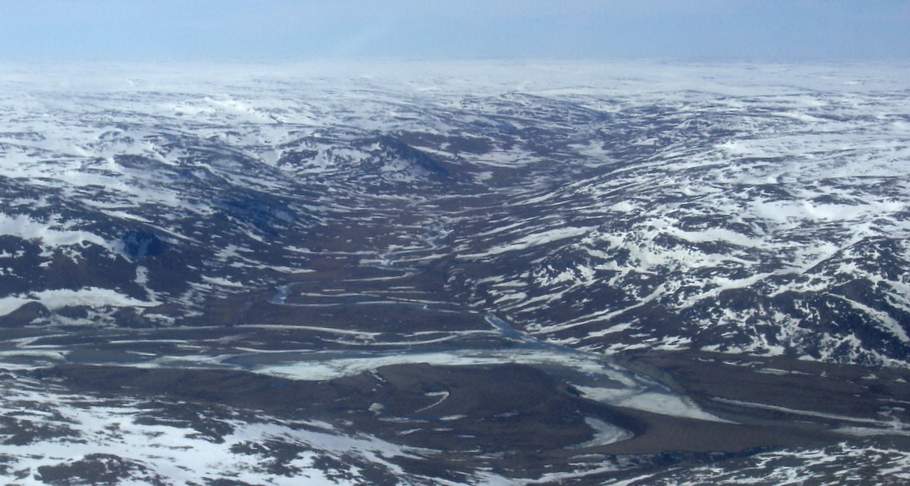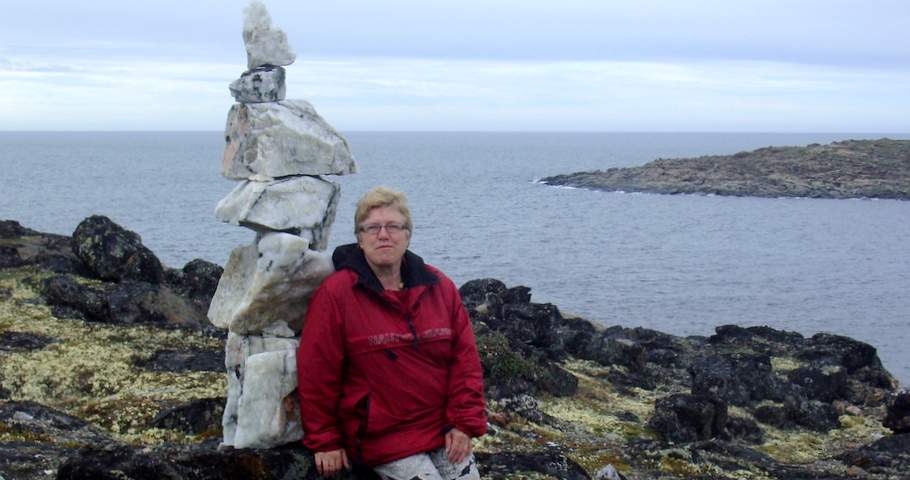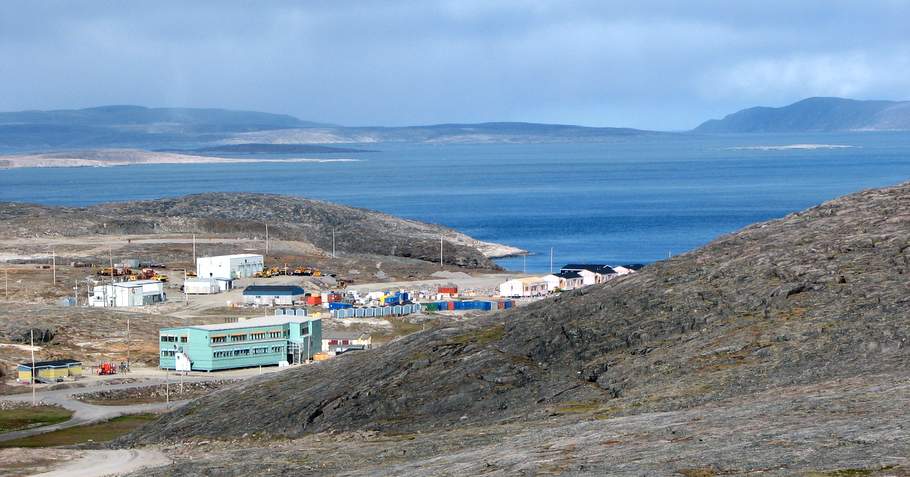No Child Should
Have to Take the Long Way Home is a
grassroot initiative to help children in need of loving care, of a protective
and stable environment to meet their basic needs in a safe house in their own
community. Children, mothers and communities are the object of this
project No Child Should Have to Take the Long Way Home. After all, every child is born with the right to have
a better chance at a life free from abuse and violence.
The “modernized” life of the Inuit sees quite a bit of poverty, overpopulation and unemployment. This, along with discrimination and white governance ignoring them as a culture has led to many social issues. They now live in real villages (communities), peopled by "white foreigners". Here the work is paid and they receive individual aid. This transformation has altered their perception, especially that of the young people. Frustration and depression generate hitherto unknown ills: alcoholism, suicide, violence, delinquency .
The INUIT, a people of the Arctic shores
Survival was long the primary concern of Inuit: survival against the forces of the spirits that control the environment. Surviving thanks to their dependence on animals for all their needs was a blessing: clothing, shelter, food, reproduction to regenerate life.Today, they have to survive in another fashion, as a people. Their “modernized” life sees quite a bit of poverty, promiscuity and unemployment. This, along with discrimination and governance ignoring them as a culture has led to many social issues, such as increased alcoholism. Western diet and a less strenuous lifestyle have an effect on health issues. How will the Inuit culture survive?
One possibility is the interest in tourism in the North and its plentiful natural resources. The Inuit know the area and have an untapped workforce, so that at least their financial future might be brighter.
Survival through animals
The seal was the principal source of food of the Inuit because it is one of the few animals that does not migrate but stays in the Arctic throughout the year. Spring and summer in the Arctic brings a return of birds and animal species that have their young in the North. Spring season can be witnessed as a time of renewal as the ice begins to thaw and break up. The Inuit diet made of fat and seal meat rich in iron and vitamin A, helps them to withstand the cold.Water resistant seal skin is used in the confection of certain clothing and boots. Scraped, air dried and softened with a scraper, sealskin is waterproof, a very desirable element of nature used as a material for boots and clothing.
Seal intestines were used as clothing to the kayakers for its light weight until the 19th century. The seal bladder, swollen, served as a float attached to a harpoon. The seals were highly sought out because the meat is very nutritious, but also because of its waterproof skin and its bones.
The walrus, whale, polar bear, muskox, fox, wolf, birds who do not fly and those of the sea provided an enviable variety of food while serving as materials for various needs in the Arctic Canada.
When the Inuit felled a whale, virtually all the animal was used for food, heating, lighting (fat). Even whale bones and dorsal fins were transformed into arcs in the confection of sleds.
The Inuit at that time relied on the caribou skin to make blankets in which he slept, the antlers he used for his hunting equipment, his summer tents, summer blankets and the cover on kayaks and traditional skin boats. Kayak and traditional umiak were built with the bones of the whale and could carry two men. Usually, the muscles were used as sewing thread by the women who sewed by hand.
Gender roles
The roles were clearly defined. The men hunted, manufactured tools, built kayaks; the women prepared the skins, sewed clothes, dried meat, cared for children, fished, gathered lichen and algae, etc. Games were also much a part of their traditional life (jackstones, bilboquet (cup and ball game), stories, dances ...).Modern life
Although they can now obtain all kinds of food, their diet and their health still rely heavily on resources that their habitat gives them. This dependence on nature should not give out because the Inuit, their habitat and wildlife will never cease to coexist.Their true adaptation is cultural

Their true adaptation is cultural: clothing, snowshoes, sleds, kayaks, hunting strategies, houses etc. Long-time nomadic fishermen and hunters, the Inuit are now sedentary. Although separated by long distances, they have preserved a remarkable homogeneity. There are over 125,000 Inuit, divided into forty ethnic groups over a vast territory overlapping Alaska (United States), Groenland (Denmark) Russia, and Canada,
The social organization of Inuit was that of a network
Inuit groups before the settlement consisted of several families (about 50 members). During his lifetime, an Inuk could meet only a few hundred people, mostly linked to him by a kind of family or support network. The more this network was extended, the greater were the chances of individual survival. The family unit consisted of a couple, their unmarried children and sometimes a widow or bereaved relative.The gathering of several families in a group of hunters was the second level of social organization. The decisions were taken jointly. The size of the hunting group depended on the wealth of the region and if the food was scarce, the group split itself into smaller units.
Inuit used many ways to build group cohesion
Inuit used many ways to build group cohesion. They "arranged" marriages of children from childhood. Even if the marriage did not take place, the promised children and their parents were now united to each other by a relation. The adoption of a child was also a way to encourage cohesion between families. Children who received the name of another person in the group depended on both their family and that of the person they were named after.A gentle education in a harsh land
The Inuit traditional family treated children with kindness and patience. Hitting children or reprimanding them was not acceptable. Imitation and experimentation were the best methods of learning and most knowledge was transmitted orally. The Inuit believed generosity, gentleness and kindness were excellent character traits.The Inuit society was based on cooperation of all its members. These qualities were essential for individual survival. It was shameful to get angry because an impulsive gesture could threaten the survival of the community. Social pressures served as an educational guide. Mood swings were ridiculed. One of the most severe punishment was to show less affection to a child. To be ostracized in a society based on group cohesion, constituted a great threat.
Perfectly adapted to the climate
Inuit have learned to use what their difficult environment offers them: polar animals, ice stones. Hunting and other resources that nature provides are always part of their values and essential activities of Inuit life. But one must understand that nature and traditions are no longer the only pillars of their cultural identity.Inuit culture today draws on multiple sources and takes many forms. In many ways, life in their frozen expanse is a great school for learning a sense of responsibility towards their own and of their leadership. Following land claim, Inuit small businesses are now emerging in areas such as tourist accommodation, sale of goods and translation services. Throughout the territory, Inuit take their affairs in hand and sit in organizations such as wildlife management agencies in all their communities. The administration of their municipal interests is entrusted to mayors and other elected officials.
In regards to professions, they have begun to mark their presence in jobs such as airline pilots, teachers, nurses, health and social services workers, secretaries, support staff and other jobs now necessary for life in the North. The business of game keeping on behalf of Parks Canada is one of many ways to combine traditional life and contemporary work for the Inuit.
Management of their resources
The Inuit have always had great respect for the land they inhabit. If it had been otherwise, they would probably not have survived as many centuries. The less diversity of species as one gradually progresses northward means that the Arctic food chain is more fragile than in other latitudes. Therefore, they should, as they have always done, continue to hunt responsibly to avoid breaking the precious balance of populations and species.Special beliefs
The first ritual that Inuit engaged in was before nightfall and were dedicated to gods or Nuliajuk Sedna, two spirits who chose to free the sea animals to the Inuit. Celebrations guaranteed the cooperation of the animal spirits, especially during the winter. When they danced during these rituals, the two main figures were two men dressed in women’s parkas. They wore skins and their faces exposed tattoos of women. Inuit tales always contained lessons.In all the villages of the Canadian Arctic, the return of the sun in spring is celebrated. Before, with the sun coming up on the horizon, an old woman was chosen by the clan to represent the passage of life and to extinguish the lamp in the igloo (kudlik). Later, a young child, chosen to demonstrate regeneration, relit the flame.
The world as perceived by the Inuit of ancient times, was strongly influenced by the relationship of men with animals, so that the old stories tell that men could change into animals, as well, animals could turn into men. These transformations were illustrated in their art.
The Inuit hold an expertise of their territory and its wildlife
 In ancient times, the ancestors used their beliefs and wisdom to manage resources. Today, they rely on science and knowledge they have acquired, but there's always room in their management of resources for some of their own beliefs. As people who have their eyes constantly fixed on their environment and the resources it contains, they hold an expertise of their territory and its wildlife. Over the centuries, they learned a lot about the relationship between the physical environment and land and sea animals who live there. Not only can they explain their behavior, but also know their place to stay each season of the year and they can predict their abundance or scarcity following the natural cycles.
In ancient times, the ancestors used their beliefs and wisdom to manage resources. Today, they rely on science and knowledge they have acquired, but there's always room in their management of resources for some of their own beliefs. As people who have their eyes constantly fixed on their environment and the resources it contains, they hold an expertise of their territory and its wildlife. Over the centuries, they learned a lot about the relationship between the physical environment and land and sea animals who live there. Not only can they explain their behavior, but also know their place to stay each season of the year and they can predict their abundance or scarcity following the natural cycles.Inuit and modernity
For the Inuit, the transition from traditional to modern life was sudden: sixty years. Today, they no longer live like their grandparents. Kayaks have almost disappeared in favor of motor boats; houses replace the igloo and tent on the land; the gun replaces the harpoon; snowmobiling replaces the dog sledding.They live in real villages (communities), peopled by "foreigners". Here the work is paid and they receive individual aid. This transformation has altered their perception, especially that of the young people. Frustration and depression generate hitherto unknown ills: alcoholism, suicide, violence, delinquency ...
Yet the meaning of the "extended family" still ties in with nature, including some memories of shamanism. Their need for discussion when making decisions, the practice of traditional activities (games), the desire to speak the language of the ancestors, remain.








No comments:
Post a Comment